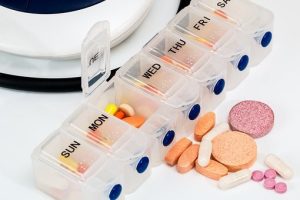On-Demand Outsourcing BPO Services for Healthcare Providers With 24/7 Coverage!
Save up to 70% on staffing costs!
Browse Specialty Staffing ServicesAN ULTIMATE GUIDE TO DRUG ASSISTANCE PROGRAMS AND PATIENT RESPONSIBILITIES

Author: M.Anjali Joshi, B.Pharmacy, St. Paul’s College of Pharmacy
ABSTRACT
A Drug Assistance Program is an initiative to aid financial help to patients who tend to discontinue their medication due to unconditionally rising prices of their drugs. Different types of DAPs are available today in different parts of the world working towards their goal, and to make sure that no one should stay diseased just because of the expensive medication.
Patient is the one who suffers and undergoes pain from the disease. And it is the patient only who needs to be highly aware of what changes his or her body is showing and is responsible to support the doctors in therapeutic processes and report the adverse drug effects if experienced

“HEALTH IS WEALTH” but what if your health costs a whole lot of your wealth?
Do you know? The drastic increase in the number of diseased cases is mostly due to discontinuation of the drug by the patient. Can you just imagine!! There are greater chances for you to die if you just discontinue the drug administration or usage. Well, there might be numerous reasons for you to stop taking that bitter drug but on the whole the main reason is the prices of these drugs reaching just higher than Mount Everest!!
Patients are not able to continue taking their medications which damage their health more, further leading to premature death of the patients. Chronic diseases like cardiac diseases, diabetes, asthma , pulmonary diseases, AIDS, neurological disorders need continuous and time-to-time doses of drugs and the price of these medications touches the sky.
- According to the NCBI- NATIONAL CENTER FOR BIOTECHNOLOGICAL INFORMATION Global spending on prescription drugs in 2020 was expected to be ~$1.3 trillion; the United States alone had spent ~$350 billion1. These high spending rates are expected to increase at a rate of 3–6% annually worldwide. This graph of expenditure goes even higher in the case of diseases like cancer, as these diseases have a huge medication cost. In 2018, global spending on cancer treatments was approximately 150 billion, and has increased by 10% out of pocket in each of the past 5 years. Data says nearly 25% of Americans are unable to purchase drugs due to their out of pocket costs.
- The Government Accountability Office (GAO) in 2016, reported that the price of 50-milligram capsules of the antidepressant clomipramine HCL, a drug used to treat obsessive–compulsive disorder, was raised by more than 2000% in one year: from 34 cents per capsule in 2013 to $8.43 per capsule in 2014. The 20-milligram capsules of piroxicam, to treat arthritis, increased by more than 2000% from 2010-2015: 9 cents to $1.82 per capsule. The price of digoxin, which is a commonly prescribed heart medication, grew by 2800% in a single year.
- According to a report published by CIDSA- COUNCIL FOR INFORMATION DRUG SPENDING ANALYSIS on 18th Nov, 2020 over the ten-year period, high out-of-pocket costs for drugs are estimated to cause1 million premature deaths of seniors in the Medicare program and lead to an additional $177.4 billion in avoidable Medicare medical costs. The plurality of premature deaths is due to cardiac conditions (atrial fibrillation and ischemic heart disease), causing 354,800 seniors to die prematurely over the ten-year period. High drug prices are estimated to contribute to 70,400 premature deaths from chronic kidney disease, 69,300 premature deaths from chronic obstructive pulmonary disease, and 62,700 premature deaths from diabetes among seniors by 2031.
“Everyone should have a fair and just opportunity to prevent, find, treat, and survive cancer,” said Emma Watson, Government Relations Director at the ACS CAN. A survey had reported that one-fifth of all the survey  respondents report having missed or delayed taking a prescribed medication due to cost, with lower-income (44%), Asian and Pacific Islander (40%), Black (44%), and Hispanic (58%)
respondents report having missed or delayed taking a prescribed medication due to cost, with lower-income (44%), Asian and Pacific Islander (40%), Black (44%), and Hispanic (58%)
DRUG ASSISTANCE PROGRAMS
In today’s modern, profit seeking world, there are few pharmaceutical companies which are providing financial benefits to their customers (patients) who are unable to afford the expensive medication for their chronic disease. The Drug Assistance Program is actually providing you with drug assistance or help even to those who do not possess health insurance. These non-profitable programs were once started in the US but today they are available all over the world. Generally these initiatives are taken by NGOs or non-profitable organizations but many pharmaceutical manufacturers as well as pharmaceutical companies are showing interest in taking up this initiative. It improves drug availability to each and every individual from the financially weaker section of the society. It is a great step towards a “good healthcare system’’ and is found to be beneficial. Example: Drug Assistance Canada.
ADVANTAGES OF DRUG ASSISTANCE PROGRAM
- Every individual is able to access medication easily.
- Helps to decrease the rate of premature deaths especially for senior citizens.
- Improves Drug Availability.
- Downfall in mortality rate.
- Ensures medication safety to everyone.
- An aid in protection of Patient Rights.
- Delay or inhibit the onset of complications in the patient.
TYPES OF DRUG ASSISTANCE PROGRAMS
Apart from branded medicines which people thoughtlessly run behind, there are generic medicines available for comparatively cheaper rates than the branded ones. But, it is due to lack of awareness among the public that only a small proportion of the population know about these generic medicines. And those who know it, think that it’s just for the BPL ( below poverty line category) and rush for the branded ones.
But don’t you worry!! There are different drug assistance programs available today.
- PATIENT ASSISTANCE PROGRAM
- PRESCRIPTION DRUG ASSISTANCE PROGRAMS
- STATE PHARMACEUTICAL ASSISTANCE PROGRAMS
- AIDS DRUG ASSISTANCE PROGRAMS
- COPAY ASSISTANCE PROGRAMS
Patient Assistance Program
Patient assistance programs (PAPs) provide people with medications for their disease, especially for those with no health insurance and those who are unable to afford the expensive drugs. These programs are run by pharmaceutical companies, nonprofits, and government agencies. PAPs may provide the full cost of medications or sometimes it provides a discount. Though PAPs have some criticism, they can and do help people who are struggling to afford medications. The main aim of these programs is to provide financial assistance to help patients get their medications for a little or no cost.
Prescription Drug Assistance Program
The Medicare Prescription Drug, Improvement, and Modernization Act of 2003 (MMA) and successive regulations demand coordination between CMS, State programs, insurers, employers, and all other payers of prescription drug benefits to know whether the prescription drug benefits provided to Medicare beneficiaries enrolled in Medicare Part D are maximum and the integrity of the Medicare program is safeguarded or not. CMS facilitates accurate claims payment and the calculation of the Medicare Part D True Out of Pocket expenses spent by Medicare beneficiaries. It provides financial support for the low income individuals to intensify any existing prescription drug coverage to the patient.
State Drug Assistance Program
Few states provide a State Pharmaceutical Assistance Program (SPAP) to help the patients of their state pay for their prescription drugs.The workflow of every program is different from the other. Some states offer programs that can only help people with specific illnesses and pay for their prescription drugs. For example, many states offer HIV/AIDS drug assistance programs (ADAPs) and programs for people who have EndStage Renal Disease (ESRD). The states that offer SPAPs often coordinate their SPAPs with Medicare’s drug benefit (Part D). If a drug is covered by both, your SPAP and your Part D plan, what you pay plus what the SPAP pays for the drug will count towards the out-of-pocket maximum you have to reach before your Medicare drug costs go down.
AIDS Drug Assistance Program
ADAP is a state administered program that provides HIV/AIDS medications to individuals who cannot meet such high expenses and are suffering from HIV disease, who have little or no coverage from private or third-party insurance policies. ADAP covers FDA approved drugs to treat HIV infection and HIV-related infections. Since the onset of antiretroviral therapy (ARTs), there has been a drastic increase in the number of people with HIV/AIDS staying alive and enjoying renewed health benefits. Along with prophylactic therapy for infections, it has now become a treatable chronic disease. Success with these drugs however depends on high levels of adherence and current therapies strongly require that the patients remain on antiretrovirals (ARVs) for the rest of the duration of their lives. At both, on an individual and on a population level, lapses in treatment can have serious consequences
Copay Assistance Programs
A survey from the American Cancer Society Cancer Action Network (ACS CAN) showed that a majority of respondents (83%) who had applied to a copay assistance program and were accepted told that the assistance enabled them to get the medication they otherwise couldn’t afford.
“Copay accumulator reform will help improve access to more equitable and affordable care needed to save more lives from cancer,” said Ms. Watson.
AAFA is working with the Centers for Disease Control and Prevention (CDC) on the CHI-ASMA( COMMUNITY HEALTH INTERVENTIONS TO ADVANCE SELF-MANAGEMENT OF ASTHMA) project. The goal of the project is to help people improve asthma control to reduce asthma rates and deaths, especially in at-risk groups.
WHY ARE THESE DRUG ASSISTANCE PROGRAMS UNDERRATED?.
- Lack of prior experience with chronic disease medication.
- Poor access to healthcare services.
- Lack of transport
- Improper knowledge about chronic diseases.
- Poor socio-economic conditions.
- Lack of health literacy.
- Lack of guidance.
- Poor socio-ethical situations
- Drug addiction
- Alcoholism
- Lack of communication between patient and the pharmacists
ROLE OF PHARMACISTS
The role of the pharmacist in handling and addressing the patients, understanding of medication instructions, cultural beliefs, sympathetic relationship with the patient and treatment-seeking paths is very important and in some contexts pharmacists play a main role in terms of discussing and scrutinizing adherence. Over the past few years the Health Communication Project has collected a set of data which provides some strong evidence for the impact of communication and contextual factors on the pharmacist–patient relationship throughout the world. Currently, pharmaceutical care is understood as the pharmacist’s compromise to obtain the maximum benefit from the pharmacological treatments of the patients, being therefore responsible for monitoring their pharmacotherapy as well.

PATIENT RESPONSIBILITIES
Patients alongside enjoying their pharmaceutical rights also have immense responsibilities which have a great impact on their health.
- Patients are responsible for providing accurate and complete information about their health and past medical history.
- Patients are responsible for immediately reporting changes in their general health condition, symptoms, or allergies to the responsible doctor or a pharmacist.
- Patients are responsible for asking for an explanation if they do not understand the planned treatment or their part in the plan.
- Patients are responsible for following the recommended treatment they have agreed to, including instruction from nurses or any other health personnel.
- Respect the right of other patients to receive confidential treatment.
- Pay for treatment on a timely basis, according to your means, with the help of various drug assistance programs.
- The patient is the one who will have to face consequences, may it be good or bad, thus patients must have a crystal clear conversation with the pharmacists regarding the procedures of the assistance programs.
- Before suddenly quitting any treatment the patient should take advice from the concerned health counselor to avoid any misleadings.
CHANGES IN ASSISTING THE PATIENTS-2023
Patients must be treated in an innovative way, where the patient himself is aware and can take responsibility for the medication and recover faster.
- Usage of alarms, notes or marking in calendars for a fixed medication time
- Introduce specified treatment to every individual
- Genome of a person can help in prediction of many inherent diseases, thus usage of this technology-Human Genome Project can help in treating the patient well
- Specialized Drug Dispensing Units can be utilized
REFERENCES:-
CIDSA- council for information of drug spending analysis 2020
NCBI-national centre for biotechnological information 2020
medicare 2020
 Book a Demo to Build Your Team Today!
Book a Demo to Build Your Team Today!
 Read Case Studies
Read Case Studies 


 Virtual Medical Assistants
Virtual Medical Assistants



